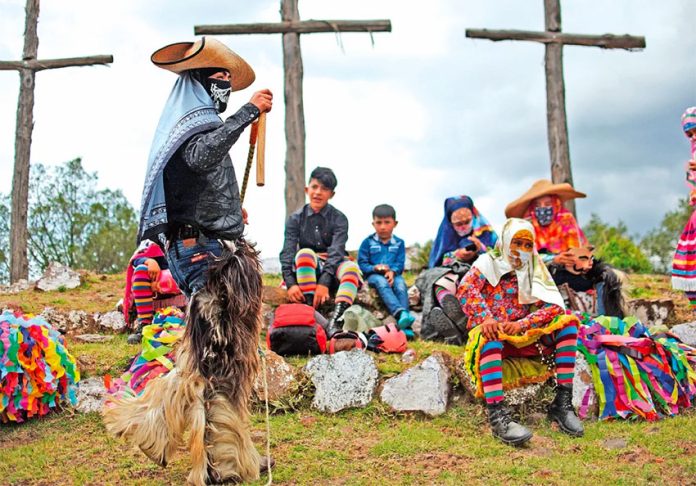The people of Toluca de Guadalupe, Tlaxcala, ended their long wait and took to the hills this week to take the traditional Dance of the Knives to rural communities.
The dance, normally performed in the spring as part of Carnival, had to be postponed this year due to the coronavirus, but those who perform it wanted to keep the tradition alive even after eight months of confinement.
The dance, which has been performed since 1930, represents the start of a new agricultural cycle and also commemorates a peasant uprising that occurred against abusive landowners at the turn of the last century.
As the story goes, indigenous people were able to organize against their European repressors by adopting a practice of talking backward when discussing their plot, that is, saying precisely the opposite of what they actually meant in order to avert suspicion.
The celebration of the reenactment of those events is portrayed by dancers clad in brightly colored shirts, skirts, elaborate hats, shawls and masks representing different characters such as a doctor, a widow and a priest. They perform complicated dance steps with knives strapped to their ankles to demonstrate their agility and ability not to injure themselves. At the end, the dancers simulate a riot against a Spanish landowner which ends in his hanging.
But the dance also represents the changing seasons and respect for nature. Hats the dancers wear are festooned with rainbow-colored streamers. They carry whips to represent the sound of thunder and bells to symbolize rain, dancing in a circle to the sounds of a violin and guitar.
The dance is a celebration steeped in identity and pride, and one that dancers felt important to take to the ranches and farms outside the city, albeit eight months later than usual.
Source: El Universal (sp)
